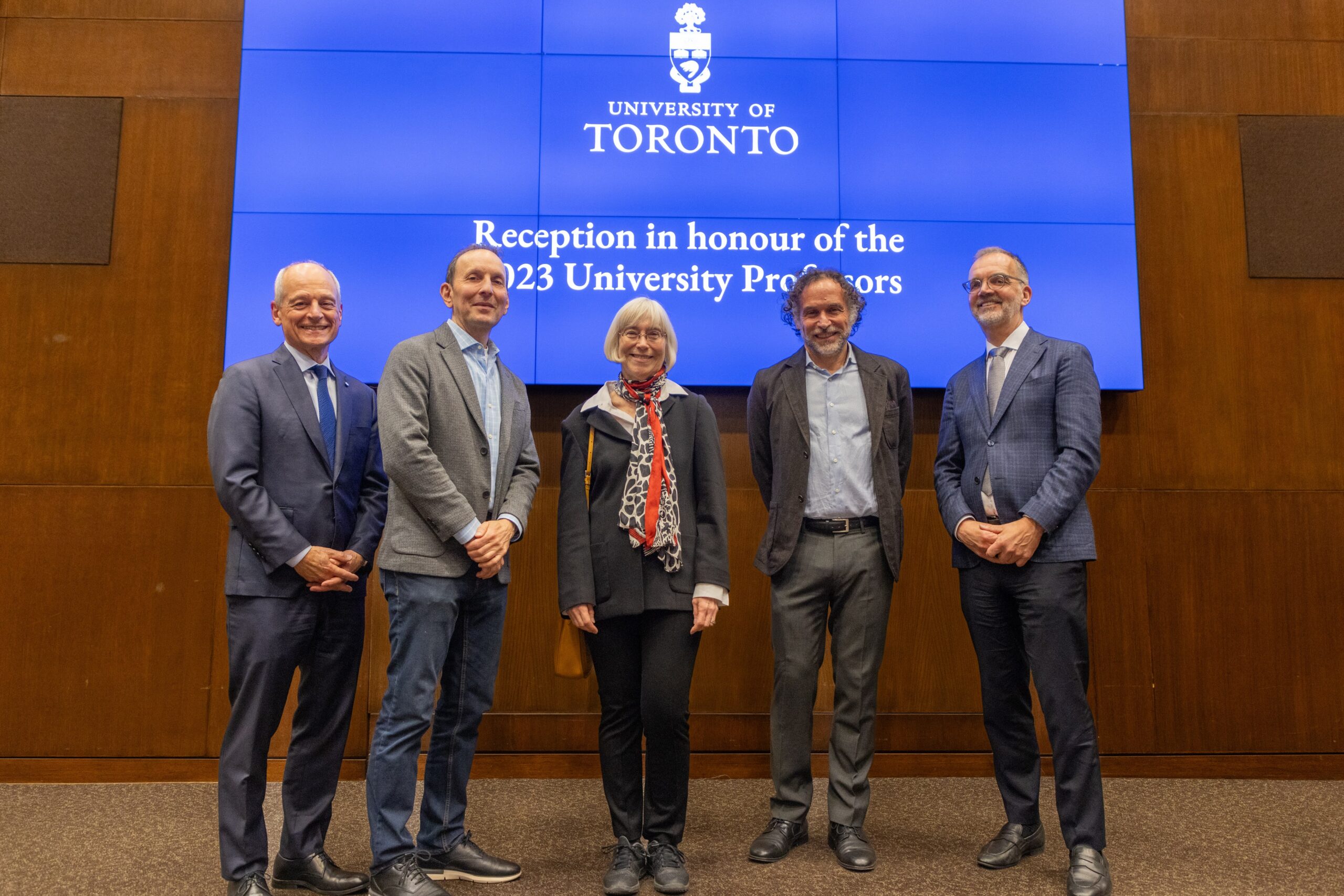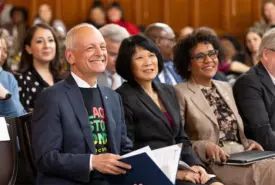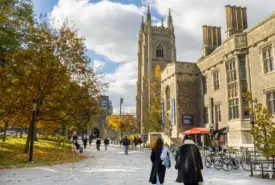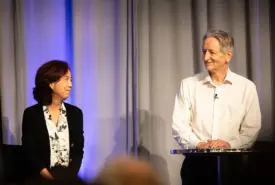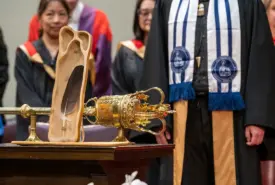Honorary Degree Ceremonies 2024

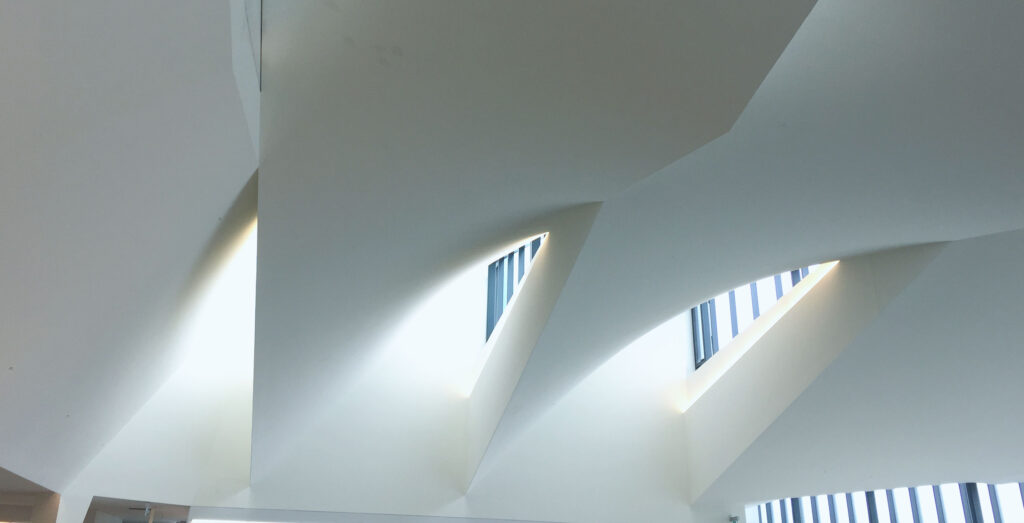
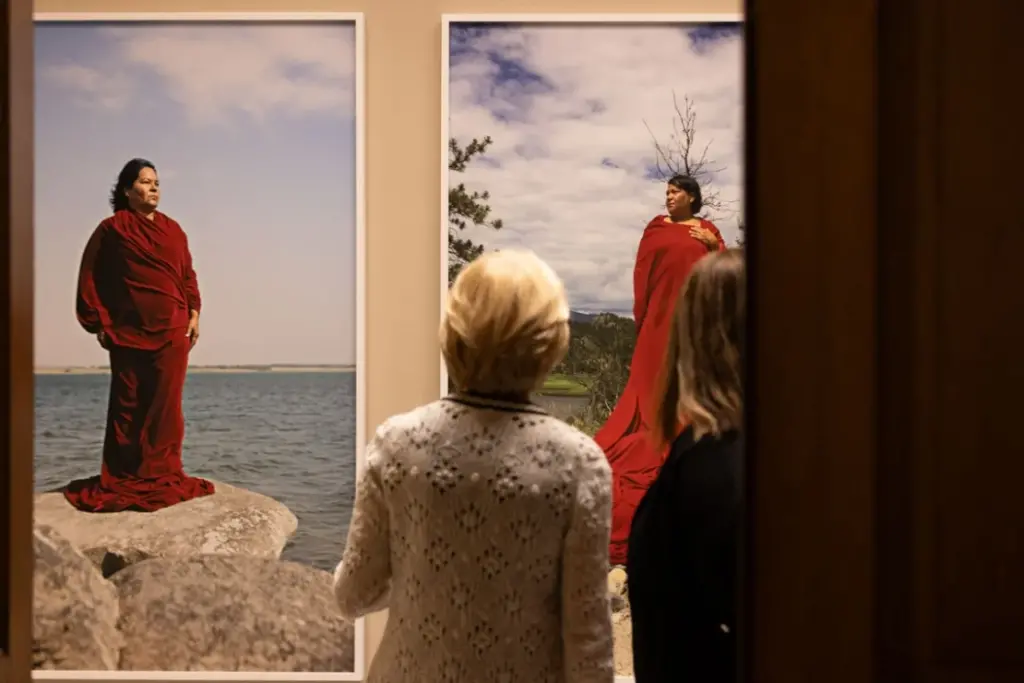
Chancellor Rose Patten looks at the new art pieces inside U of T’s Simcoe Hall (all photos by Polina Teif)
A new art installation inside the University of Toronto’s Simcoe Hall is shining a spotlight on some of Canada’s most respected Indigenous artists while giving the community an opportunity to reimagine the concept of public space.
The exhibition, acknowledging the land, honours Indigenous continuity, resilience and self-determination. The long-term installation occupies space previously reserved for paintings of U of T leaders who have shaped the university over its 196-year history – a gesture acknowledging the importance of making space for Indigenous voices and presence.
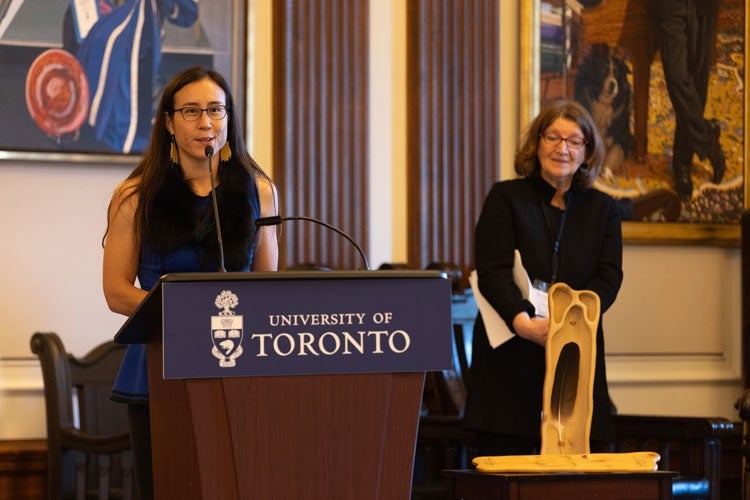
Artist Katherine Takpannie said her mother – a residential school survivor who was born in Apex Hill, Nvt., before being taken away at age six – was in tears when she learned her daughter’s work would be featured at the exhibit.
“It was impactful for her because her life and what happened to Indigenous Peoples has been swept under the rug for so long,” said Takpannie, who was born in Montreal.
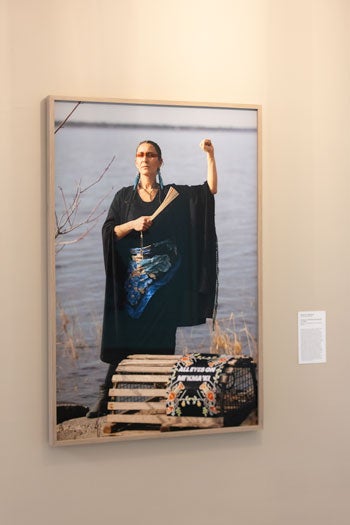
Takpannie’s portrait is of Inuk/L’nu/Scottish grassroots activist Ma Myriah Peace. It recognizes Peace’s frontline work in support of Mi’Kmaq fishers’ rights and pays homage to her role as a determined and dedicated community organizer.
Other artists whose work is featured include: Rebecca Belmore, Catherine Blackburn, Lori Blondeau, Dana Claxton, Caroline Monnet and Laakkuluk Williamson Bathory with Jamie Griffiths.
Under the leadership of the President’s Office, and through wide-ranging conversations with Indigenous artists, curators, faculty members and staff, the installation was produced by the Art Museum with the generous support of U of T’s Office of Indigenous Initiatives.
“It was an honour to support this exhibit and see the reimagining of the walls of Simcoe Hall come to life,” said Shannon Simpson, senior director of the Office of Indigenous Initiatives.
“This is an incredible example of prioritizing Indigenous space while showcasing Indigenous excellence and resiliency.”
Those who wish to view the artwork at Simcoe Hall can register for a guided visit through Eventbrite. While the Dec. 13 visit is already fully booked, there are visits scheduled for Jan. 10 and Feb. 14 at 3:30 p.m. Those who can’t make the listed dates can contact Melody Lu, operations assistant at U of T’s Art Museum (mel.lu@utoronto.ca) to plan group tours.
A launch to celebrate the exhibit was recently held inside U of T’s Governing Council chambers.
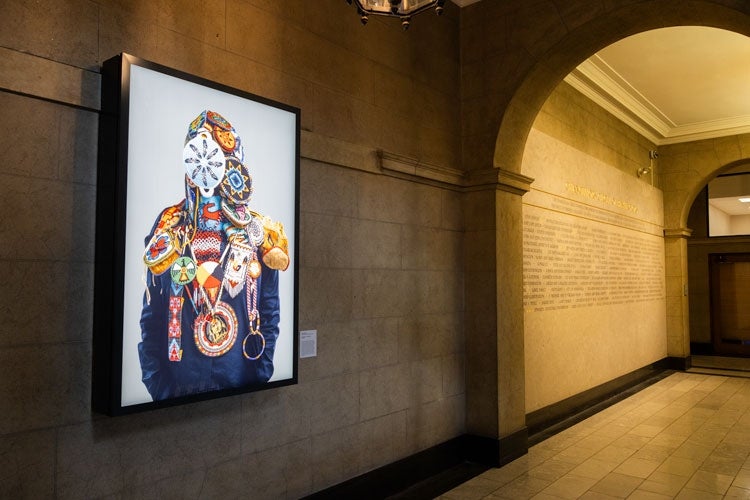
U of T President Meric Gertler said the portraits invite the public to “hear voices of courage, resilience and solidarity that for so long have been ignored or silenced.”
He added that the installation is among several actions taken by U of T in response to Wecheehetowin, the final report of the Steering Committee for the University of Toronto’s Response to the Truth and Reconciliation Committee of Canada, and will serve as a reminder to the university community that the work of reconciliation is ongoing and must remain a priority.
Barbara Fischer, executive director and chief curator of the Art Museum at U of T, said the discussions around the role of traditional leadership portraits in public-facing spaces inside Simcoe Hall began years ago, but the “clincher came in 2020.”
“There were rising questions about public art and monuments prompted by the Black Lives Matter movement – why are there permanent monuments which tell of histories that exclude others? It was such an intensive time to rethink public space at every level, and it continues to be vitally important today” said Fischer, who is an associate professor, teaching stream, at the John H. Daniels Faculty of Architecture, Landscape, and Design.
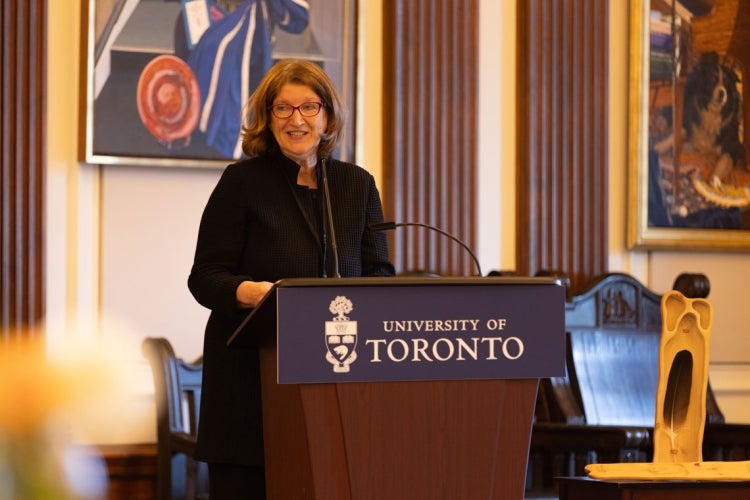
She added that wide-ranging conversations with Indigenous artists, curators, faculty members and staff led to the installation becoming a reality.
“The voices of Indigenous artists are critical to confronting colonial history and relations with the land; their works attest to the amazing flourishing of Indigenous art and artists all across the country,” she said.
“We are super proud that the artists agreed to be presented in this context with their works.”
Rose Patten, U of T’s chancellor, said she continues to be in awe of the artwork in the exhibit.
“Let me add my thanks to the artists represented in it and to the staff responsible for all of this,” she told those gathered at the launch. “You have made a very impactful contribution to our academic mission as an institution dedicated to inclusive excellence.”
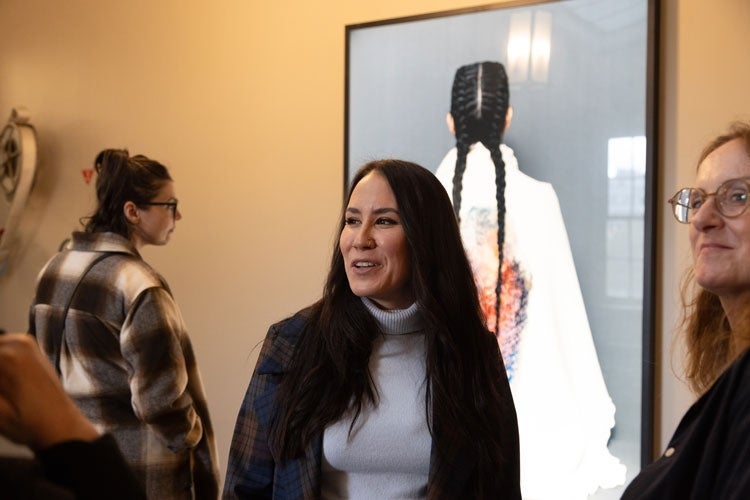
Blackburn, a multidisciplinary artist and jeweller who spoke at the event alongside Takpannie, said she feels honoured to be featured alongside some of her favourite artists – but that the installation comes with its challenges.
“I’m addressing the effects of a settler institution, in a settler institution” she said. “To have this work celebrated alongside these powerful women is beautiful, and intense. This exhibition is a powerful intervention bound through love, land, resurgence and relationality, and that is worth celebrating.”
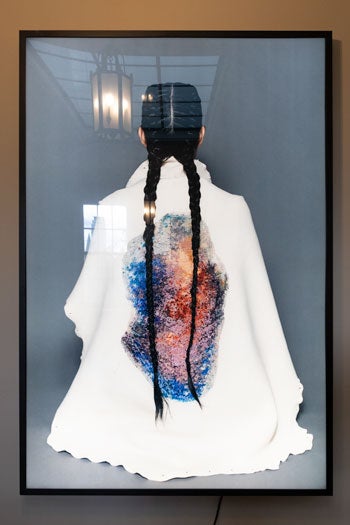
–

